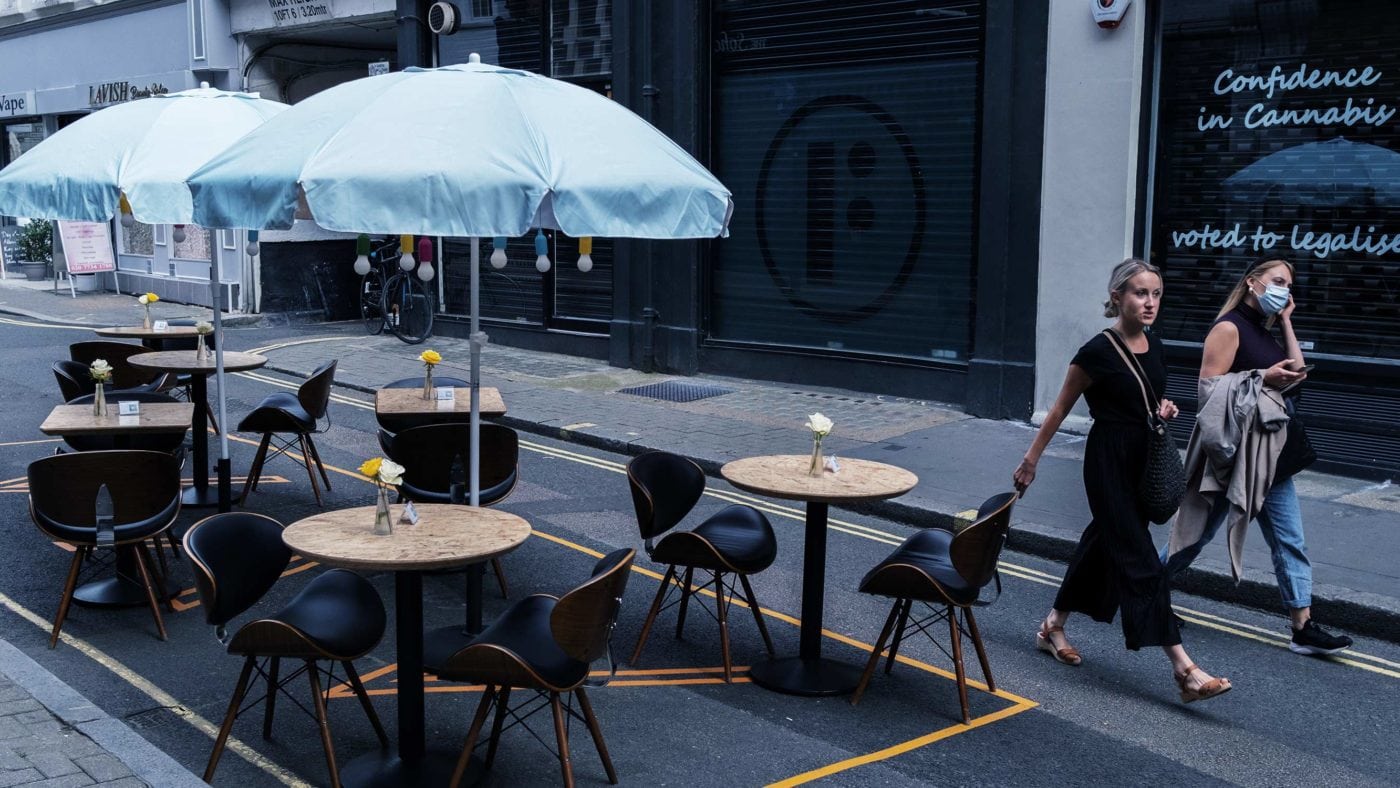Perhaps the only good thing to come out of lockdowns was the pedestrianisation of parts of our major cities. In Soho, for example, the council banned cars at certain times, allowing bars and restaurants to serve people outside. In Oxford, one of the roads which runs through the centre of the city was transformed into Broad Meadow, a project that replaced parked cars with benches and flowers, transforming the area into a supremely attractive streetscape.
Unsurprisingly, these schemes and others were extremely popular. They drew huge crowds, helped businesses recover from the impact of Covid, and offered a low-risk environment for those who had spent months stuck inside. Since then, however, pedestrianisation has been rolled back across the country as local authorities have caved into two of the most powerful lobbies in modern Britain: Nimbys and motorists.
That’s a huge shame, but it really doesn’t have to be this way. Not only are the arguments against car-centric cities compelling, but pedestrianised urban areas – as the Covid era showed – are very attractive.
The problem is not just the emission from cars which are damaging our health and the environment, but the underlying fact that many of our towns and cities are designed around cars, rather than people. Even major cities such as Leeds are poorly served by public transport, effectively compelling many people to make journeys by car. And even in cities with decent public transport, people are often discouraged from walking or cycling by a lack of infrastructure.
High car usage is also bad for the economy. Too many vehicles means congestion, which hampers productivity. People being stuck in traffic wastes both time and money. Indeed, research from the CEBR suggests that from 2014-2030 the overall cost of congestion to the UK economy will be £300bn.
So, where do we go from here? The answer isn’t just making cities less car-friendly, but making them better suited for cyclists and pedestrians. This will take a few minor adjustments and some more substantial reforms.
One small but impactful change would be to fine drivers whose vehicles make too much noise. This may sound like a minor point but very loud noises have an adverse effect on people’s quality of life and can impact their health, especially if it disturbs their sleep. The UK should follow the lead of Paris and install ‘Noise Radars’ so that the drivers of excessively loud vehicles can be fined.
We should introduce more major changes as well. It should be the rule not the exception that city centres are pedestrianised. To ensure this happens the government should take power away from local authorities to ensure that NIMBYs and car owners are not able to game the planning system. And if areas are not pedestrianised then car traffic should still be reduced. Councils should extend the use of Low Traffic Neighbourhoods and Ultra Low Emission Zones.
Perhaps the mother of all reforms though, would be introducing road pricing. The Treasury is likely to become far more interested in this as we switch to electric cars and the revenue from fuel duty starts to dry up. The arguments in favour are solid, both for drivers, the economy and the public finances. By charging people based on both when, where and how long they drive, a system of pricing system would encourage lower emissions (for remaining petrol vehicles), less traffic and provide a reliable stream of income to the Exchequer.
Given the state of the economy, there’s going to be plenty of competition for public spending in the coming years. One win-win way of improving both health and productivity is to invest in both public transport and cycling infrastructure. In the case of the former, that isn’t just about mega-projects like HS2, but improving intra-city transport. Tom Forth of ODI Leeds, for instance, has found startling GDP and population impacts just from improving the reliability of buses in the UK’s second city, Birmingham.
What this isn’t about is a ‘war on motorists’. There will probably always be a role for cars, particularly in more remote areas: there’s just no reason that in the 21st century our cities should be subservient to cars, when pedestrianised, cycle-friendly areas are what people actually enjoy.
Click here to subscribe to our daily briefing – the best pieces from CapX and across the web.
CapX depends on the generosity of its readers. If you value what we do, please consider making a donation.


